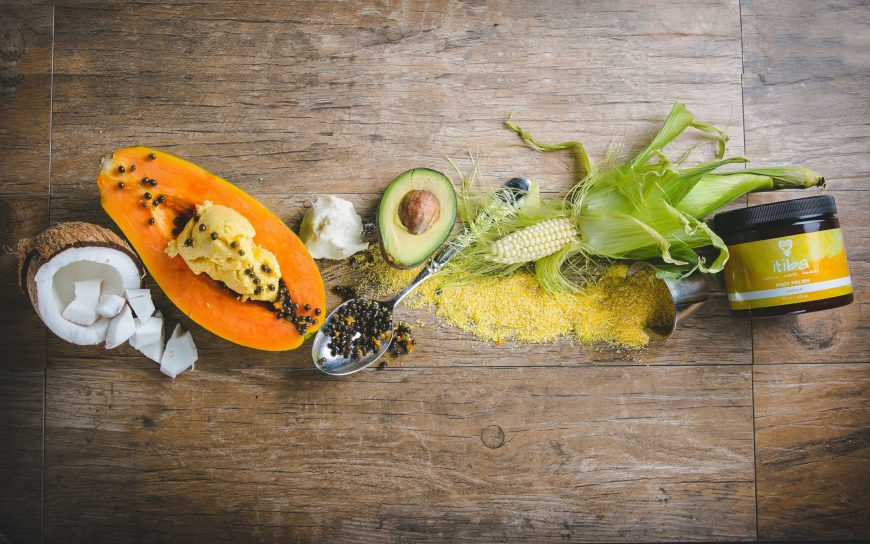As part of a project that I have been working on for some months now, where I have experts in their respective fields speak to you about skin care, we are continuing our discussion on exfoliation and today I am so honored to have weighing on the subject one of our own family members, Aisha Massac, owner of Mankind Grooming For Men. She is also a Licensed Estheticians & Professional Makeup Artist based in Washington, DC. So sit back and enjoy the read on exfoliation:-) and Thank you Aisha Massac!
Exfoliation made simple
What is exfoliation? Exfoliation is the removal of surface dead skin cells, with the ultimate goal being to clear debris and free the retired cells to allow for better absorption, circulation, and brighten dull skin by promoting skin renewal.
These dead skin cells, left on the surface, slow down healthy cell renewal, increase the depth of wrinkles and create a dull, sluggish appearance. The more you effectively exfoliate, the younger the skin looks and the better your skin care products can penetrate the skin.
However, too much exfoliation can cause redness and skin sensitivity. You should exfoliate no more than three days per week, as to not cause irritation or sensitive skin. If you already have sensitive skin as well as skin that easily hyperpigments, I would not recommend exfoliating since it can make your skin more sensitive and hurt your skin barrier. If you just HAVE to exfoliate (even outside of my recommendation), use an emollient based exfoliant and ONLY once a week; a light AHA would be a great option being that it’s moisturizing. A great option would be Dr. Perricone’s Advanced Face Firming Activator.
There are two types of exfoliation methods:
PHYSICAL
The most common form of exfoliation is physical exfoliation, which is mechanically removing superficial layers of the skin. This can be done with a face loofah, brush, washcloth, or with exfoliating cleansers. Mechanical exfoliators that utilize abrasive agents with sharp edges actually scrape and cut the skin. Abrasive agents such as apricot seeds (St. Ives being the most popular), granulated peach kernels, corn cob, silica, walnut shells and sugar instituted a major following in the ‘80s, followed by brushes, sponges, and loofahs. These all resulted in pulled, torn, stretched, abraded and traumatized skin that was covered with microlesions. Microlesions can lead to bacterial invasion, further leading to acne and/or wrinkles. Better options for physical or mechanical exfoliation are the Clarisonic skin brush and/or home microdermabrasion device (using aluminum oxide crystals). The Clarisonic has different skin brushes for different types of skin (Acne, Sensitive, Normal), and it allows you to adjust intensity for light or deep cleansing, and to avoid irritation. Other than the clarisonic, a mild exfoliating scrub is a great way to go to get a refreshed and clean look to the skin. An option for a more mild mechanical exfoliant would be almond meal, corn meal, or even baking soda, which can be added to your cleanser.
A professional mechanical exfoliant favorite of mine is the Dermalogica’s Daily Microfoliant, which uses a rice-based enzyme powder, that when mixed with water, activates the papain and salicylic acid.
CHEMICAL
Chemical exfoliation, in essence, dissolves the “glue” that binds the dead skin cells together. Chemical exfoliation involves applying products containing a form of alpha hydroxy acid and/or beta hydroxy acid that dissolve this “glue” around the skin cells, hastening the shedding of several layers of the epidermis. Estheticians throughout the world have long preferred enzymes for exfoliation such as pineapple, papaya and pumpkin, typically found in a mask form, to exfoliate the skin. These enzymes are natural forms of AHAs. My favorite type of chemical exfoliation is enzyme exfoliating products over the AHA’s and BHA’s. I absolutely love June Jacobs Perfect Pumpkin Peeling Enzyme Masque. I also love Jan Marini’s SkinZyme Papaya Mask. Other popular chemical exfoliation methods, found in the skincare world are retinoids. Retinoids are in the same family of Vitamin A and is used to treat some forms of acne, aging, and even psoriasis. Although retinoids can cause flaking, they don’t typically cause dryness – this flaking is the sloughing off of dead cells. Retinoids are also known to cause irritation or sensitivity and must at all times be used with caution in sunlight. *Note: look for retinoids that are encapsulated.Regular use of alpha- or beta- hydroxy products or clay-based masks is of utmost importance to help reduce breakouts and remove dead skin buildup that could clog pores. These are among the most effective exfoliating ingredients. Because AHAs are water-soluble, they can penetrate deeper into the skin’s surface to lift the dead cells. However, caution must be given as they may irritate sensitive skin if used in too high a concentration. On the other hand, BHA (or salicylic acid) is fat-soluble, and doesn’t penetrate below the epidermis.
**Note: If you have sensitive skin or a skin condition, such as rosacea, eczema, seborrhea, or dermatitis, you may want to consult your doctor or dermatologist to find the most effective exfoliating method for your skin type.
**Note: Do NOT use products that contain more than one of the above in one product
To exfoliate:
1. Wash your face
2. Take medium to large amount of exfoliant (about the size of a dime to a nickel) and gently apply to damp skin.
3. Massage the exfoliant over your skin. Never press into your skin – you are not sanding wood! Avoid your eye area, as this is a delicate area.
4. Use a washcloth or damp cloth to wipe clean with warm water
5. Apply your moisturizers and serums.Written By: Aisha Massac, Licensed Esthetician & Professional Makeup Artist based in Washington, DC

